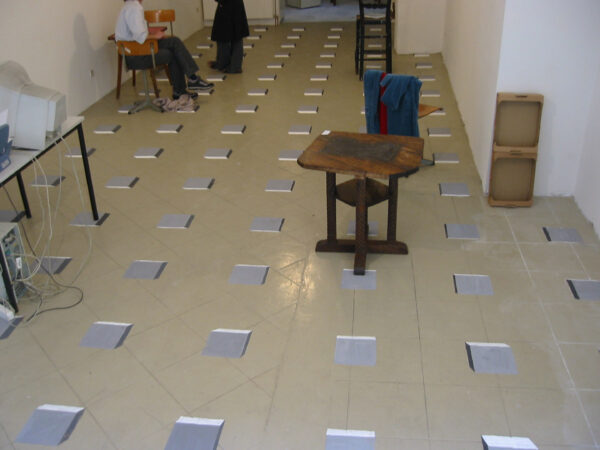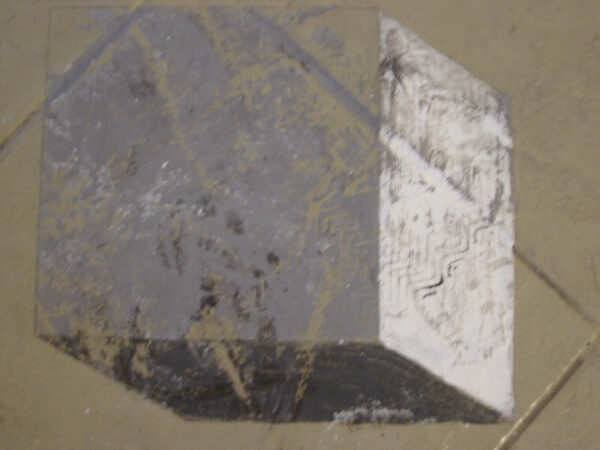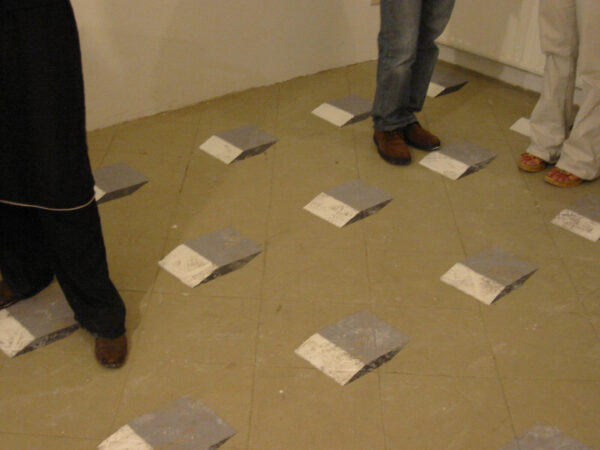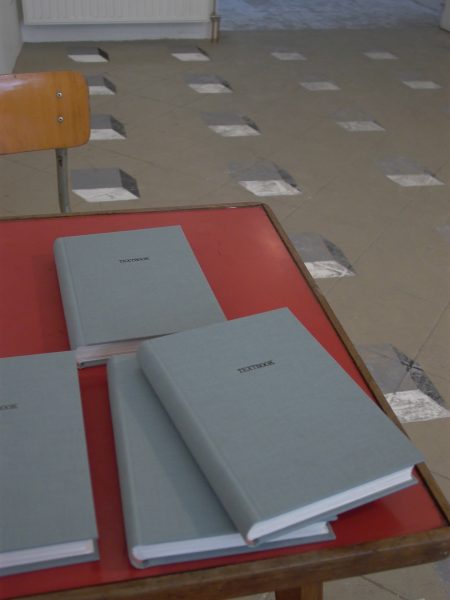OPENING
FRIDAY 27.05.04 AT 8PM
EXHIBITION
28.05.04 – 10.06.04
The exhibition that Franciska Lambrechts realised in Etablissement can be approached as a triptych. The surface of the floor in the main space was painted with endless perspective tile patterns, digressing towards a vanishing point that became accentuated by a piece of décor: a sawed and drilled hole-riddled antique table. Here and there laying scattered about were “props” to insinuate an ageing historical progression. A next panel revealed in the back area, a small alter with an accumulation of elements: a television set that played on a loop a report about the casket industry in Ghana, a cassette player with a recorded speech about limits and factors within an economic system. These elements were complimented by a still life of poetic paraphernalia (peach, dried flower petals, shells and small stones…) crowned by a Budda statue and coloured lights.
Finally Lambrechts showed a small edition of books (5 exemplars) that were collectively spread about the space for visitors to regard. The books (printed on hand-made paper with a linen hard cover) contained a collection of press texts about contemporary art, as they were sent world wide via e-mail by the well-known e-flux communication system. Important detail: from each of the texts, Lambrechts eliminated all the names of the artists, local art centres and other data lent the announcements functional.
The main motive in Lambrechts’ complete installation is the issue of continuing the idea behind modernism- a development since the 18th century with the rise of industry and the citizen. According to Lambrechts we have arrived at a turning point in our social structure- the end of the 2nd act, as it was put in 19th century theatre. The vanishing point of the painted floor tiles was emphasised by the elements of décor- the antique table- referring to the endless stories of the modernistic idea. Through the fact that the floor paint contained a high concentration of calk, the shoes of the visitors slowly smeared the perspective drawing of the tiles, commencing the 3rd act of the aforementioned theatre piece. Furthermore, the alter was decked with “worthless” objects insinuating the inauguration of a godless time after the Enlightenment. As a metaphor illustrating terms of economic worth, she displayed a video illustrating the economy of the dead in Ghana. Buddha rests on the amplifier, making certain economical truths seem trivial. This stands in sharp contrast to theological thinking of our modern time.
The books in 5 exemplars appear in the exhibition as an important judgement that figures as instructions for the contemporary drama. Above all, Lambrechts filters the most occurring terms from the books into a word game of refrigerator magnets. This word game brings to light her interest in the endless grind and consumptions (capitalism) of the modernistic idea, which dominates the practice of the art world. Art has, according to her meaning, begun to stand by itself and can only consider itself as long as we continue to produce from a historical point of view (Duchamp, French Revolution…)



